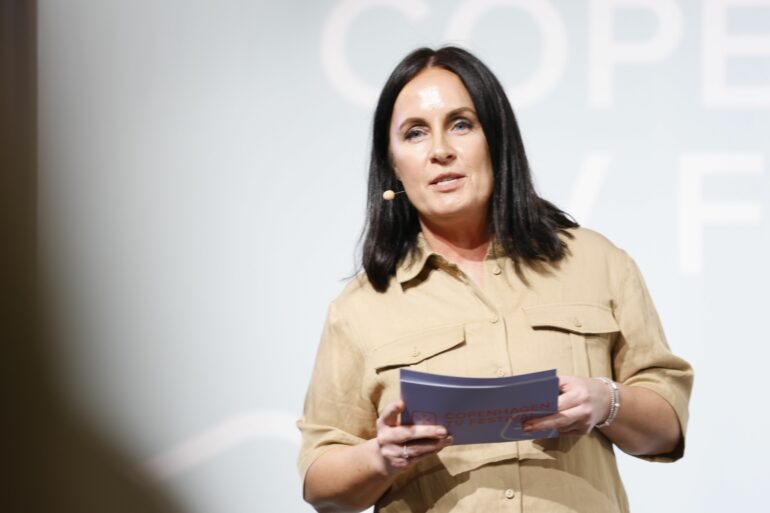WRITTEN BY: Per Laursen
Broadcasters must enter new platforms with SoMe storytelling to survive the greatest generational shift in media consumption ever, UK expert suggests.
There is a growing challenge for the Nordic public service organizations: Can they remain relevant in children’s fragmented media lives? Can their content find a place in an ecosystem where younger generations are platform agnostic and expect everything, everywhere, all at once?
In 2023 Nordisk Film & TV Fond reported about its previous theme year 20-something, one focus of which was how differently generations that have grown up with easy access to global content 24/7 consume culture and Nordic content. Nordic film institutes and broadcasters continuously keep an eye on how to reach to young audiences.
The British strategist Jo Redfern addressed this issue at this year’s Copenhagen TV Festival.
“It’s easy to assume that public service TV will not survive the greatest generational shift in media consumption ever,” she granted. Redfern appeared in Copenhagen to share her premise that public service TV can and must defend its position.
“Defense calls for public service providers to think broader with their content than just broadcasting. They must leverage their stories across social and gaming platforms to build bridges back to public service TV,” she said.
Jo Redfern is based in England and is a senior leader in content and platform strategy for IP, brands, and rights holders aiming to engage Generation Z and Alpha across media. Lately, Redfern has overseen content primarily on YouTube, Roblox, and TikTok, monitoring kids, teens, and young Gen Z signaling how they want their content served.
“Please don’t entertain the misunderstanding that kids’ attention spans have reduced – they haven’t, but their interest has shortened. They are saturated with content and platforms, so you have two seconds, not five minutes, to grab their attention - interest,” Redfern said, adding:
“Have you ever screamed at your kids because they’re gaming non-stop for hours? Their attention span is just fine”.
The key message to Nordic pubcasters is to make their public service content available on more platforms where kids hang out.
“There is no reason that public service broadcasters should not post daily on social channels such as YouTube if it means that they remain relevant to their audience - and acknowledge that this is a way to encourage the audience to go back to the core channels to consume content,” Redfern told NFTVF.
“When young people consume content across a myriad of platforms, they expect to encounter content relating to their favorite shows and characters across the ecosystem. If not, it probably doesn’t resonate with them, and is not considered content ‘that speaks to me’.”
According to Redfern, Gen Z and A expect a relationship with content wherever they are. If a broadcaster does not have a relationship with them on certain channels, young people are less likely to reward that same broadcaster with their attention.
Redfern suggested that broadcasters look to YouTube's social visual style, with quick edits and storytelling in “chunks”, rather than the traditional linear storytelling.
“To better connect with kids and youth, consider that the visual style of social media – social storytelling - is what kids are very adept at reading, very quickly.”
Jo Redfern’s “solution” of entering big tech platforms seems logical, but might not please public service organizations or Nordic taxpayers.
“The argument that Nordic broadcasters might be reluctant to support big tech fails for me, because they take money from commercial Co-Production partners and sell to other broadcast platforms also powered by big tech,” Redfern told NFTVF”.
